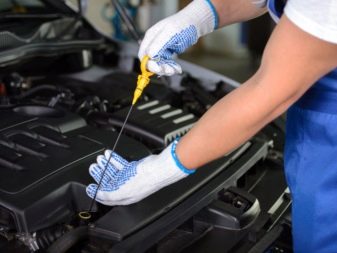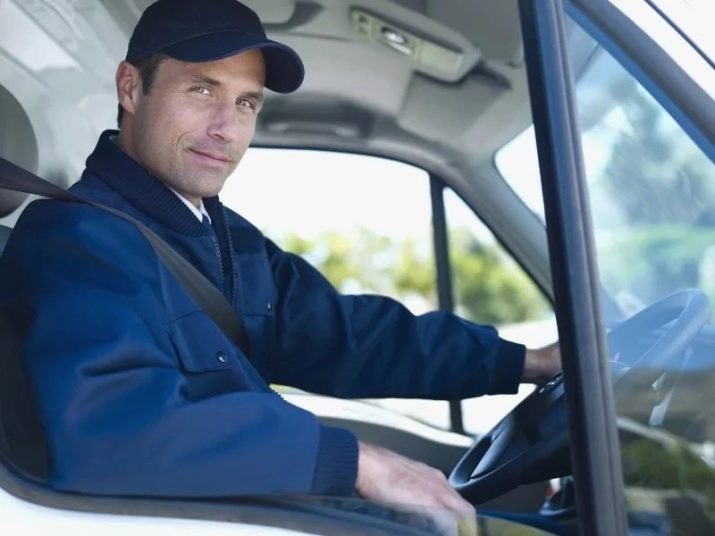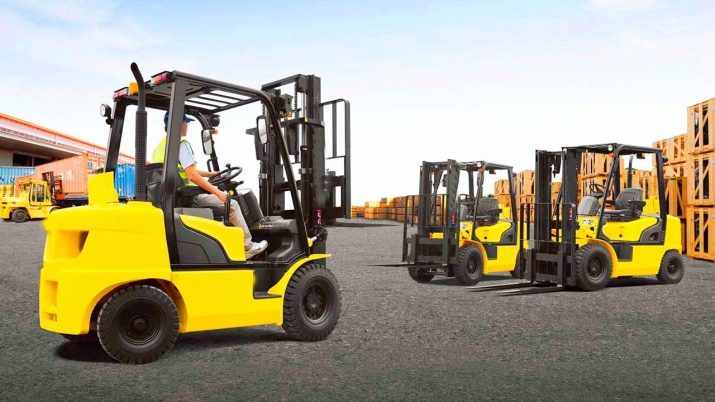Driver: description of profession and responsibilities

Many people think that a driver is a relatively simple job. But nevertheless, the description of the profession and responsibilities should certainly be taken into account in order to understand what awaits a person when choosing it. There are many subtleties and nuances that are not obvious from the outside.
Description
If you are guided by the activity classifier adopted in Russia, then it is easy to see that the driver's profession belongs to category 11542. But this characteristic is completely insufficient to understand what kind of activity it is. Essentially, a driver is a professional who devotes himself to driving. But it is necessary to understand that this is not all. Drivers can additionally work in the following professions:
- forwarders;
- technology;
- taxi drivers;
- couriers;
- security guards;
- collectors;
- specialists in cross-border transportation of goods and so on.
Important! In any case, you will have to monitor the serviceability of transport, compliance with traffic rules and the accuracy of filling out the documentation (often the driver draws up many documents on his own).

Responsibilities and functions
The driver of any vehicle must fulfill the following duties:
- check the availability of fuel, oil and other technical fluids, consumables, their worthy quality;
- assess the condition of electrical equipment, brakes, steering and other equipment on the car;
- to carry out freight, passenger and special transportation themselves;
- draw up documentation;
- resolve difficult and contradictory situations during travel "from point A to point B".
This is not just another working profession in the stereotyped sense of the word. The driver must also plan the maintenance and debugging of his car, evaluate how high-quality the service was. We'll have to master the skills of first aid in order to rescue passengers who are in an accident or otherwise injured. Some of the drivers are forced to help logisticians plan transportation and organize the loading and unloading of their vehicles ... and this list can go on for a long time.


The bus driver must take into account the peculiarities of passenger transportation. At the same time, it is one thing when a bus moves around the city, and quite another thing is driving on an intercity or even an international highway. These are unequal load conditions, even the travel speeds differ significantly. But driving a bus means always obeying the dispatcher and observing speed.
A good driver always knows in advance where the speed limits are, especially those related to the technical condition of the road and his vehicle.
The following points should also be studied:
- dangerous and relatively safe areas;
- sharp turns;
- intersections and intersections;
- location of bridges, railway crossings, tunnels, avalanche-prone areas (in the mountains).

Immediately after arrival, before leaving or when starting a shift, the driver needs to check the condition of the wheels, steering wheel, brakes, communication system, rear and side-view mirrors. Any bus must have emergency stop signs, driver's first aid kits, fire extinguishers, route signs and other special signs. All of them are checked before shipment, as well as the health of ventilation, air conditioning, heating, as well as the condition of the case, glass, engine. It is also necessary to receive waybills and check all documents, undergo a pre-trip medical examination.
The bus driver is the face of his company. Therefore, he must meet strict requirements for appearance, uniformity and tidiness (hygiene). When a bus leaves for a long distance, and two drivers are traveling there, they should replace each other only where it is prescribed by the waybill. If you have to do this at any other time, you need to immediately inform the dispatcher and explain the reason.
Additional responsibilities include the following:
- strict adherence to the route and schedule when driving around the city;
- making stops only in designated places;
- control of the safety of passengers, including during embarkation and disembarkation;
- ensuring the safety of baggage and hand luggage on tourist flights;
- checking abandoned and forgotten things, handing them over to the dispatcher or the person in charge of the fleet;
- suppression of crimes;
- notification of the appropriate services about suspicious objects and any kind of criminal threats.

A tram driver is significantly different from a bus driver, if only because he does not have such freedom when driving. However, this is not reflected at the level of responsibility. In addition, a tram, like a trolleybus car, is a source of increased electrical and fire hazard. The carriage drivers are closer not to the drivers of motor transport, but to the drivers of the subway and electric trains. However, they still have to obey traffic regulations, traffic signals, and in some cases - the gestures of traffic controllers.

In car fleets, such a position is often distinguished as a driver with the functionality of a mechanic. A competent driver-mechanic is obliged to understand as deeply as possible how a vehicle works, what problems it may have, how to fix them. And also driver-mechanics (more precisely, driver-mechanics or "mechanics") are included in the crews of tracked and wheeled military and special-purpose vehicles, all-terrain vehicles. People in this profession must fulfill the following duties:
- carry out routine maintenance, repair and adjustment of engines, auxiliary equipment;
- use special equipment and equipment installed on the vehicle (sometimes weapons systems);
- ensure the arrival of serviced vehicles to the designated place, if necessary, repairing it on their own in off-road conditions and the impossibility of obtaining technical assistance.

The truck driver reports to fleet managers, industrial chief engineers or construction managers... Such professionals may not even have a secondary education, but they are required to understand how a vehicle works, how it works, and what problems there may be. It is equally important to learn the rules of safe driving in the current edition, the rules for using the car and its on-board equipment, and the requirements for maintenance.
As with the bus, you need to have correctly completed waybills and strictly follow their instructions... Before leaving on a flight, you should check the condition of the truck (if necessary, cargo and special equipment), as well as undergo standard medical control.
Drivers can and should fix many faults in their truck on their own. This is especially true for those who work on intercity and international communications or travel to hard-to-reach places.
A good chauffeur always thinks about how to meet the schedule, how to save fuel and lubricants, while not getting into an accident. He complies with fire safety standards and always tidies up his parking space, even if he stops there for a short time. And also his duties include the following:
- compliance with the rules for unloading and loading;
- control of the distribution of cargo in the car, taking into account the center of gravity;
- checking the fastening of the transported cargo;
- maintaining the serviceability and completeness of the car;
- compliance with the rules of the order;
- knowledge of the correct actions in case of emergency situations in the garage, in the parking lot, on the way, during unloading and unloading.

A freight forwarder driver is more of a technical contractor. Along with driving, he is obliged to draw up documents when he accepts and delivers the cargo, to track the load. Freight forwarders are most often subordinate to the heads of the organization directly or to the management of structural divisions. You must have a B or C license and have at least 2 years of driving experience.
To assess how driving will affect the parameters of the cargo and its safety, you need to thoroughly know the structure of the car and its operation. The forwarder is obliged to understand other issues no worse than a simple driver.

Forklift drivers are not line personnel, but employees of a warehouse or other structural unit... However, the requirements for medical supervision and compliance with safety rules do not differ. We'll have to learn the following subtleties:
- how a forklift works;
- how to load and remove various types of cargo;
- how to lift and move the load;
- fire and sanitary safety standards, labor protection;
- internal regulations;
- decisions and orders of the organization's management.
Inspection of equipment and troubleshooting is also a mandatory part of the work of a forklift driver.... We'll also have to deal with scheduled preventive repairs and maintenance. The work of an operator of an electric pallet truck is similar in its content. Both of these employees enter into only occasional contacts with other personnel, they can work both outdoors and indoors, and even alternately.
They should pay particular attention to safety while driving.

A separate category is deservedly distinguished ambulance drivers. Like taxi drivers or police drivers, they must, first of all, thoroughly know the entire territory of the serviced area, all roads, and be able to choose the best route. The pace of the ride is also determined by the driver. And often he himself has to help the sick or injured, to transfer them.Therefore, special knowledge and physical strength are needed.
The driver must have the following features:
- category B rights (better than C);
- driving experience of at least 3 years;
- scrupulous knowledge of traffic rules;
- the ability to service the car and keep it clean;
- willingness to follow the orders of the medical staff;
- willingness to work irregular day and face inadequate patients.

Requirements
Qualities
An important quality for every driver is accuracy and scrupulous approach... He must be constantly vigilant - not only during the flight, but also when servicing the car. Any abnormal situation requires an extremely quick response. Be sure to also pay attention to the following nuances:
- be polite in dealing with other staff and passengers;
- be disciplined;
- execute all orders;
- be responsible and careful;
- be punctual;
- endure stress;
- maintain cleanliness and order.

Skills
Any driver must know the roads of the settlement or region, as well as traffic rules. You cannot drive a city bus, regular and route taxis without the ability to communicate with any passengers, including children. Writing travel documents is another important component of an intelligent driver's skills. In some cases it is important to be able to work on executive level machines.
And - what is important - drivers are assessed by their ability to drive for a reason, but without accidents.

Teaching and perspectives
The position of a chauffeur is one of the most demanded both in Russia and abroad... Obtaining such a specialty usually does not require sophisticated training. Many got behind the wheel almost immediately after school, taking short courses. They are organized by many driving schools and internal training firms. But some people prefer to start their careers from specialized secondary and even higher educational institutions. This will also allow us to become organizers of transportation, manage personnel, repair and restoration work.
Exams in such educational institutions are focused more on physics and mathematics. However, for ordinary drivers attending simple driving schools, independent study of such disciplines is important. Chauffeurs get a job in institutions and companies such as:
- Taxi;
- PATP;
- construction firms;
- industrial, agricultural, educational and medical institutions;
- authorities and so on.









